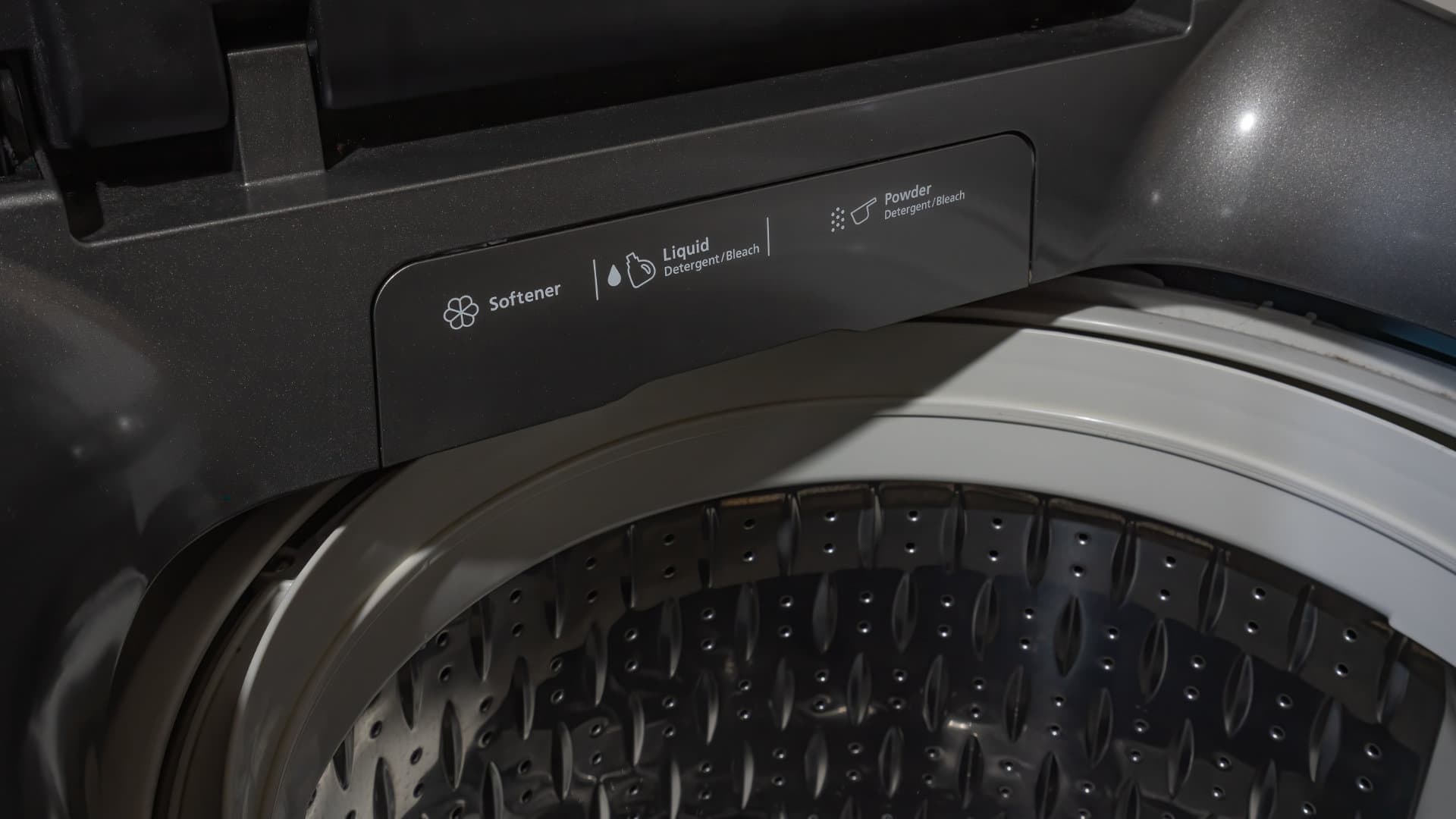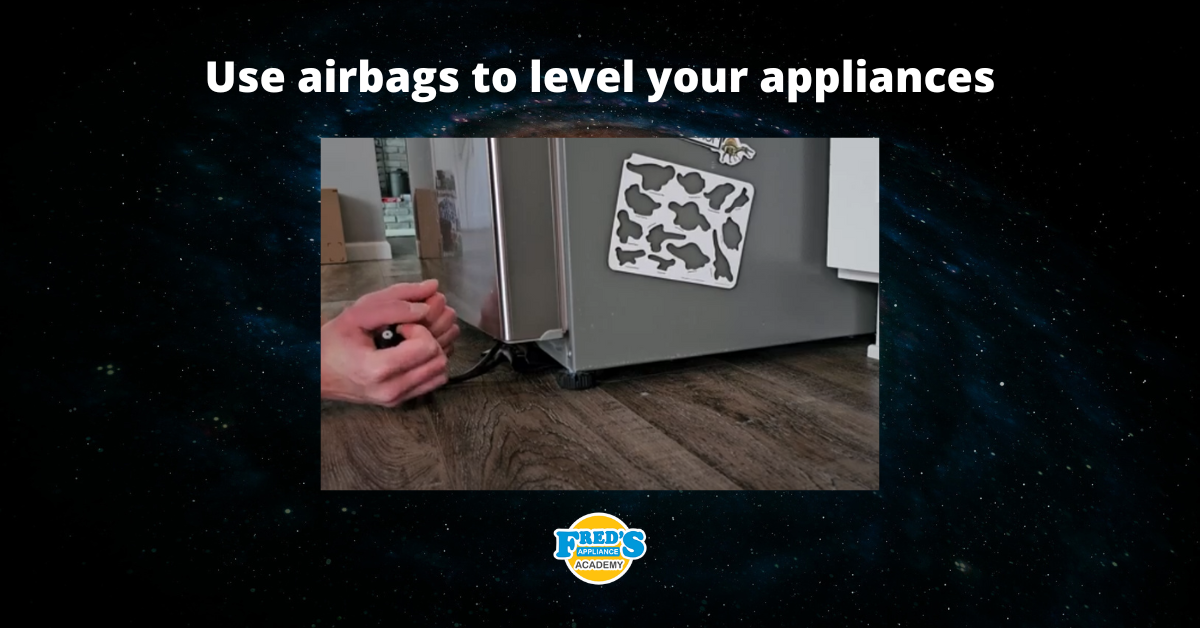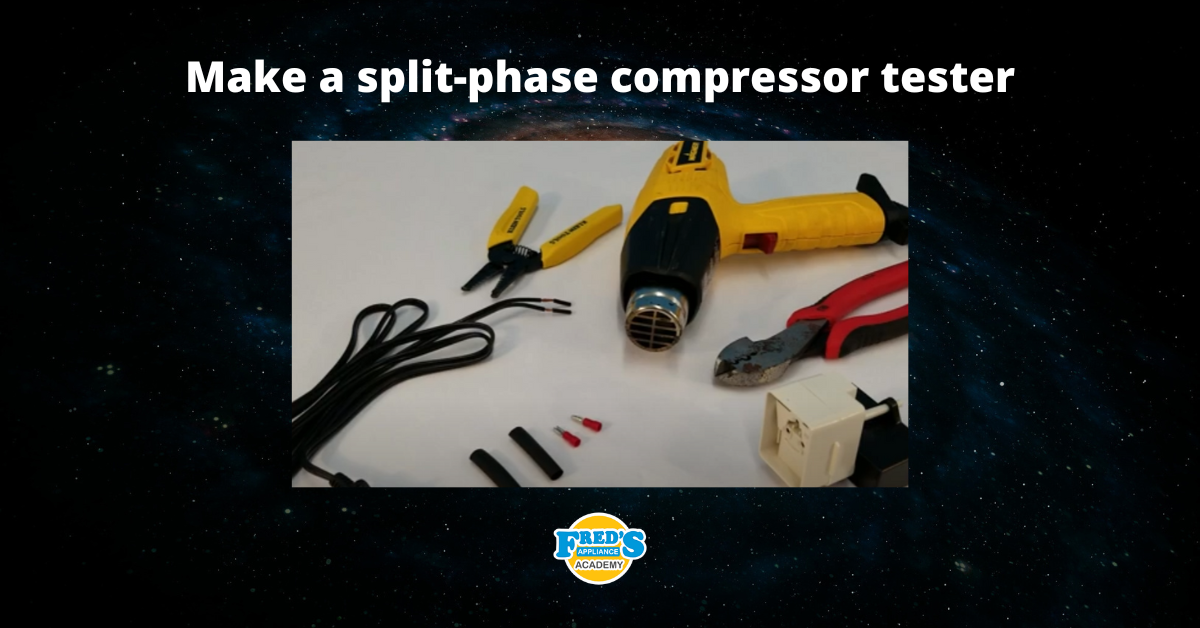
If your Samsung washer isn’t working or needs a service, this guide can help. Here, we run through some of the key maintenance issues you might encounter and how to solve them. Ultimately, you want to prevent problems from arising in the first place.
Samsung Washer Models Covered By This Guide
We cover the following Samsung washer models in this guide. (Please note that some elements of this guide will also apply to models not listed below). Samsung usually places the model and serial numbers at the back of the machine or on the inside of the door.
A typical model number goes something like this:
WA50M5410GW/US
- WW and WD refer to the type of machine: washer only or washer dryer, both of which we cover
- The next number refers to the load weight. This guide covers either 50, 60, 70, 80, 90, and 112. This guide includes all load weights.
- The next letter refers to the year. This guide covers models with J, K, M, N, R, and T as the second set of letters (indicating the year of release, with J being 2015, K being 2016, and so on)
- The following number refers to the “series” which indicates the number of functions the machine has. The 5 series, for instance, has 7 programs. This guide covers all series.
- The next number refers to the speed the machine wrings out the laundry after a cycle, with a maximum of 1400. This guide covers all wring speeds.
- The next set of numbers are the design of the machine.
- The next two letters are the door color and the color of the case
- The final two letters after the forward-slash indicate the country of manufacture.
Maintaining Your Samsung Washer
Samsung divides maintenance requirements by the frequency with which you should perform. Some jobs are routine, while others are monthly.
Routine Maintenance Requirements
Samsung recommends the following routine (regular) maintenance.
Clean The Unit’s Exterior
Occasionally, you’ll notice blemishes on your washer’s exterior. Using a damp cloth and mild detergent can usually remove these.
If you’re struggling to remove blemishes, Samsung recommends the following steps:
- Select a cooktop cleaner
- Dispense onto a damp, clean microfiber cloth
- Rub the affected area gently in a circular motion until the residue lifts off the surface
- Clean any remaining cleaning product from the area using a fresh, damp microfiber cloth
- Dry the area with a dry microfiber cloth
Keep The Detergent Drawer And Door Open Between Cycles
Samsung recommends that washing machine owners keep the detergent drawer and main door slightly ajar between cycles to prevent mold buildup. If mold has already formed, you can run the machine on a regular spin cycle (without any washing) and add chlorine bleach to the detergent compartment.
Occasionally Run A Hot-Water-Only Cycle
If you usually run a cold cycle, you can keep your machine smelling clean and fresh by running a hot water cycle without any detergent. This setting helps to clear soil and detergent residue buildup.
Monthly Maintenance Tasks
Samsung also details a host of monthly maintenance tasks to keep the washer in excellent condition.
Run A Self-Clean Cycle
Samsung tries to make it easy to keep your unit in good condition. The “Self-Clean” cycle is a feature you find on some of the newer models discussed in this guide.
To conduct a Self-Clean cycle, select the Self-Clean option and then press Start.
- If you notice bad smells coming from your machine, add bleach to the detergent drawer.
- If you notice soap suds building up, run a second Self-Clean cycle
- Begin a Self-Clean cycle if you notice the Self-Clean LED is on. It will appear after 20 top-loading washes and 40 front-loading washers.
- It takes around one hour to run a Self-Clean cycle. In that time, the washing machine will target areas not usually cleaned by regular cycles.
Inspect And Clean The Pump Filter
The pump filter is a device that collects debris from your washing, protecting the washer’s internals. Keeping it clean extends the life of your machine.
Here’s how to inspect and clean it correctly:
- Open the pump filter access panel by pressing on the front panel.
- Look for the rubber drain hose.
- Place a towel or drain pan directly underneath the drainage area to collect any residual water
- Remove the hose cap from its housing by rotating it anti-clockwise. Please note that you may have to use some force to remove the cap because of the airtight seal.
- Let the water drain and remove the filter cartridge.
- If you notice any dirt in the filter, use a soft-bristled toothbrush to gently remove it from the mesh.
- Inspect the drain pump filter housing on the machine and ensure that it is also clean.
- Replace the hose cap and screw it tightly into place. Then replace the pump filter access panel.
Clean Your Detergent Drawer
The detergent drawer on some Samsung models can become soiled by residues. Cleaning this regularly improves the overall performance of the machine.
Here’s the recommended process from Samsung:
- Pull the drawer away from the machine until it is fully extended.
- If applicable, lift the detergent dispensers out from the main drawer by pushing on the ends of each drawer at the same time.
- Rinse these in the sink. If there is stubborn residue, remove it by scrubbing it with a toothbrush.
- Next, remove the entire detergent drawer from the machine so that you can clean the opening – another area prone to gunk buildup. On front-loading machines, you can remove the drawer by pressing on either side at the same time while pulling. On top-loading models, you pull the drawer and tip to remove it.
- Use a soft-bristled brush to clear away any detergent debris. The more often you do this, the less detergent residue will build up over time.
- Replace the drawer back in its housing.

How to test a gas range ignitor

Congrats to our graduating March 2024 class

How to test a 120 volt receptacle

Congrats to our graduating February 2024 class

Why Is Your Dishwasher Soap Not Dissolving? (5 Easy Fixes)

Refrigerator Dripping Water Inside? 5 Quick Fixes

Appliance Industry 2023 Q4 Results

Congrats to our graduating January 2024 class

Clever ways to use airbags to level your appliances



